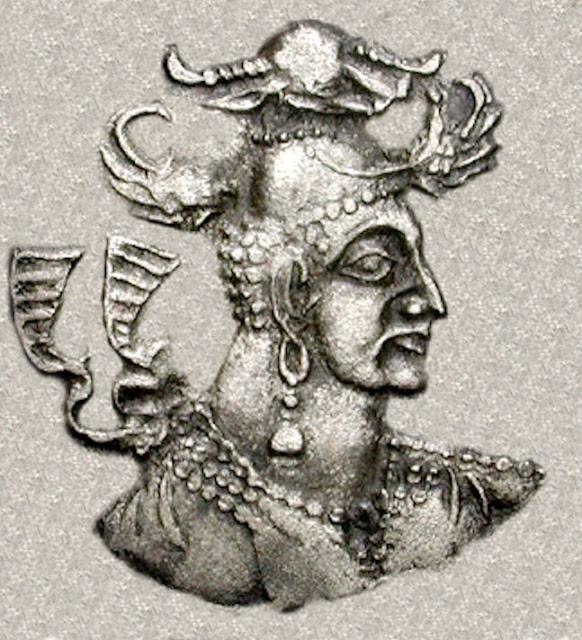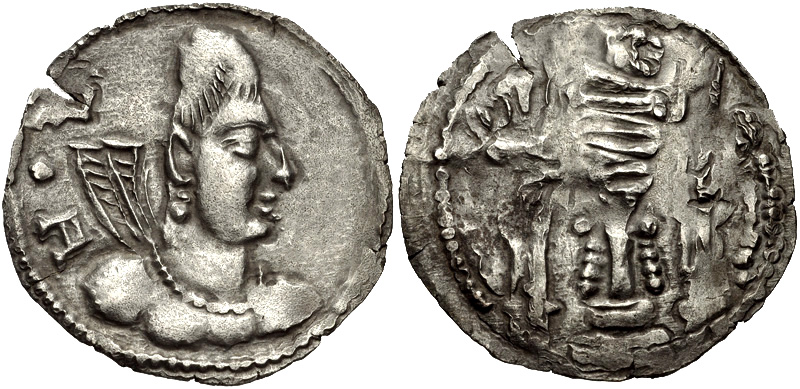A hemiobol coin of Cleopatra VII struck in 31 BCE
"Now, because of this reverse and because Antony himself on his
return had been defeated in a cavalry battle by Caesar's advance guard,
he decided not to let his men encamp thereafter in two different places,
and so during the night he left the intrenchments which were near his
opponents and retired to the other side of the narrows, where the
largest part of his army was encamped. And when provisions also began to
fail him because he was shut off from bringing in grain, he held a
council to deliberate whether they should remain where they were and
hazard an encounter or should move somewhere else and protract the war.
After various opinions had been expressed by different men, Cleopatra
prevailed with her advice that they should entrust the best strategic
positions to garrisons, and that the rest should depart with herself and
Antony to Egypt. She had reached this opinion as the result of being
disturbed by omens. For swallows had built their nest about her tent and
on the flagship, on which she was sailing, and milk and blood together
had dripped from beeswax; also the statues of herself and Antony in the
guise of gods, which the Athenians had placed on their Acropolis, had
been hurled down by thunderbolts into the theatre. In consequence of
these portents and of the resulting dejection of the army, and of the
sickness prevalent among them, Cleopatra herself became alarmed and
filled Antony with fears. They did not wish, however, to sail out
secretly, nor yet openly, as if they were in flight, lest they should
inspire their allies also with fear, but rather as if they were making
preparations for a naval battle, and incidentally in order that they
might force their way though in case there should be any resistance.
Therefore they first chose out the best of the vessels and burned the
rest, since the sailors had become fewer by death and desertion; next
they secretly put all their most valuable possessions on board by
night."
-Cassius Dio: Roman History, Book 50.14-15
Source:
https://en.wikipedia.org/wiki/File:0010-Cleopatra-03.jpg
Quote:
http://penelope.uchicago.edu/Thayer/E/Roman/Texts/Cassius_Dio/50*.html#14



Comments
Post a Comment